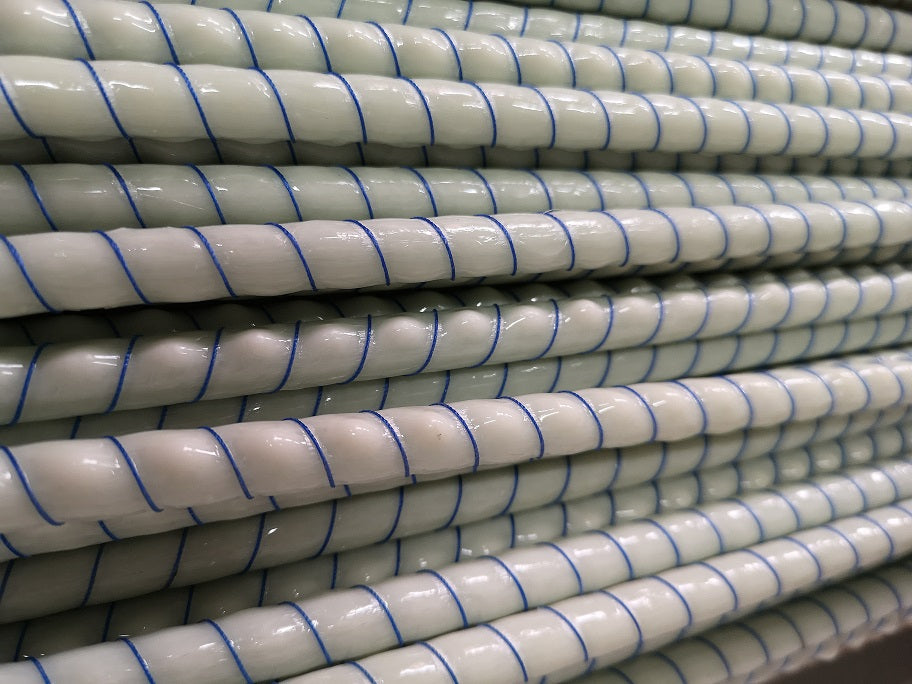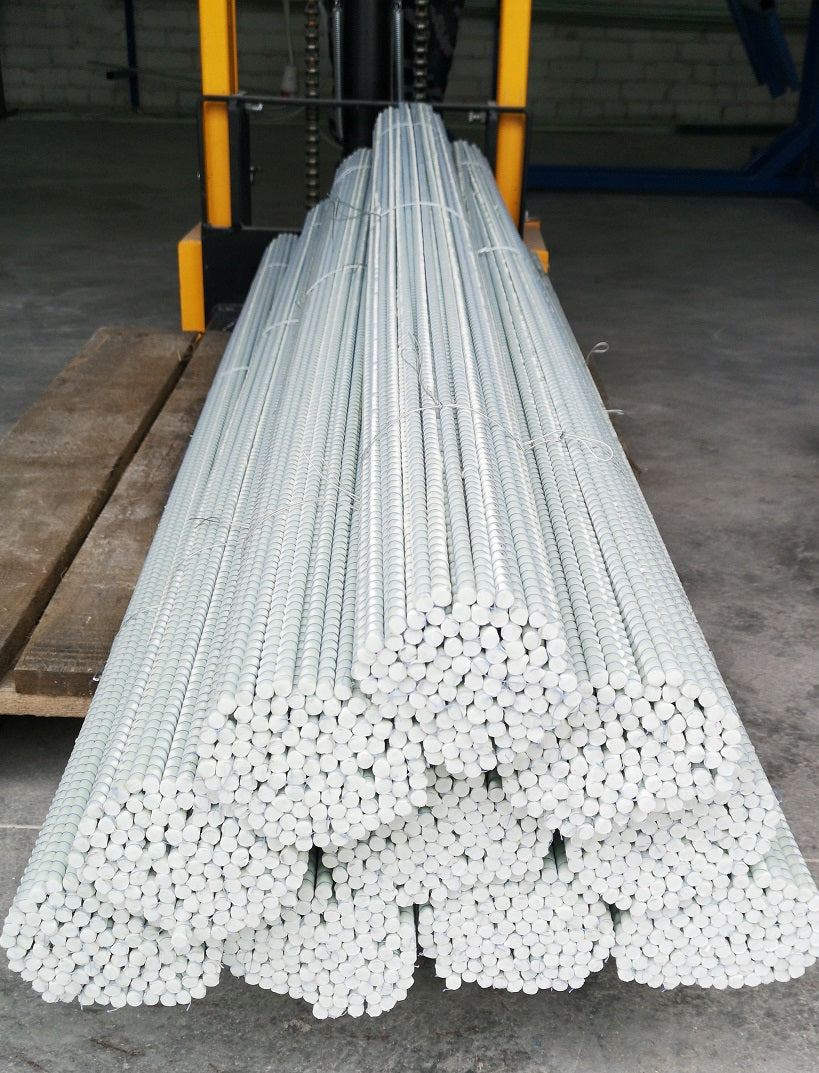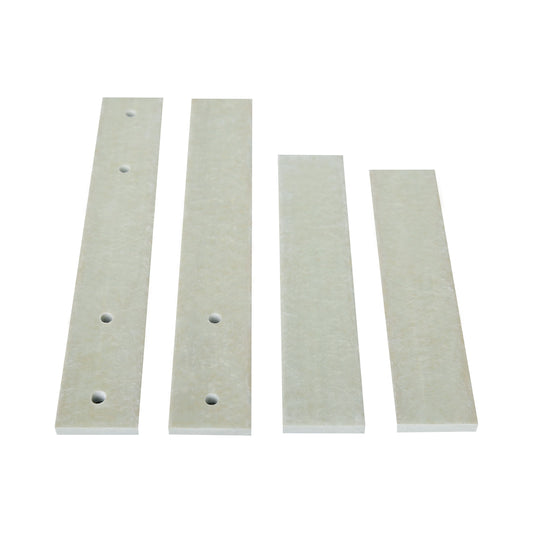FIBERGLASS REBAR
We manufacture and can offer you fiberglass rebar which is especially suitable for reinforcing elements that will be exposed to aggressive media (foundations, floor slabs, reservoirs, canals, farm floors and gutters, car roads and parking lots, fertilizer warehouses, etc.)
MAIN ADVANTAGES
-

Non conductive, transparent
Non-conductive and completely transparent to magnetic and electromagnetic fields.
-

Convenience
Due to its relatively low weight and the ability to roll, it is convenient to transport and carry.
-

High tensile strength
The tensile strength is 750-1020 MPa depending on the diameter of rebar and is from 1.5 up to 2 times higher than S500 grade steel.
-

Lightweight
Density is about 2000 kg/m3, and fiberglass rebar is about 3.9 times lighter than steel rebar.
-

Low thermal conductivity
Thermal conductivity coefficient is about 0.34 W/(mK) (about 130 times less conductive than steel).
-

Deformations
It deforms only elastically so it can be rolled into rolls and straightens when released, does not remain bent.
MAIN DISADVANTAGES
Although fiberglass reinforcement has a number of advantages, it is necessary to evaluate its weaknesses before choosing this material.
-

Low modulus of elasticity
The modulus of elasticity is 35-45 GPa (also depends on the diameter and is about 6-4.6 times lower than steel).
-

Relatively low operating temperature
Operating temperature is up to 105 °C (steel characteristics start to decrease from 300 °C).
-

Fatigue
Fiberglass (regardless of its binder) have a property of fatigue. Therefore, the continuous load should not exceed 50-60% of its maximum bearing capacity.
TECHNICAL DATA
Rebar technical characteristics
|
Performance |
Unit |
Value |
|||||
|
Φ4 |
Φ6 |
Φ8 |
Φ10 |
Φ12 |
Φ16 |
||
|
Nominal diameter |
mm |
4 ± 0,5 |
6 ± 0,5 |
8 ± 0,5 |
10 ± 0,5 |
12 ± 0,5 |
16 ± 0,5 |
|
Max diameter |
mm |
4,5 ± 0,5 |
7 ± 0,5 |
9 ± 0,5 |
11 ± 0,5 |
13,5 ± 0,5 |
17,7 ± 0,5 |
|
Min diameter |
mm |
3,5 ± 0,5 |
5 ± 0,5 |
7 ± 0,5 |
9 ± 0,5 |
11 ± 0,5 |
15 ± 0,5 |
|
Calculated cross-sectional area |
mm2 |
12,56 |
28,26 |
50,24 |
78,5 |
113,04 |
200,96 |
|
Weight of 1 meter |
g |
24 ± 5% |
47 ± 5% |
95 ± 5% |
145 ± 5% |
205± 5% |
405 ± 5% |
|
Min tensile strength * |
MPa |
≥ 950,26 |
≥ 1022,59 |
≥ 1049,99 |
≥ 1097,12 |
≥ 1005,75 |
≥ 909,98 |
|
Modulus of elasticity in tension |
GPa |
≥ 44,95 |
≥ 45,17 |
≥ 46,70 |
≥ 51,76 |
≥ 47,71 |
≥ 45,37 |
|
Compression strength |
MPa |
≥ 300 |
|||||
|
Tensile strength, shear |
MPa |
≥ 150 |
|||||
|
Elongation at break |
% |
≤ 2,34 |
≤ 2,46 |
≤ 2,40 |
≤ 2,15 |
≤ 2,32 |
≤ 2,01 |
|
Operating temperature |
0C |
≤ 70 |
|||||
RECOMMENDATIONS
-
SUITABLE
Particularly suitable for reinforcing elements that will be exposed to aggressive environment (tanks, canals, farm floors and gutters, roads and car parks, fertilizer depots and etc.). In such elements, it solves the weakest side of steel - that is corrosion resistance.
-
SUITABLE
It is very suitable for forming the connecting reinforcement of multilayer partitions to reduce heat loss from the building.
-
SUITABLE
Particularly suitable for buildings that require magnetic or electromagnetic transparency (electrical switchboards, magnetic resonance rooms, etc.).
-
SUITABLE
Suitable for elements without highly concentrated stresses, as well as for elements which will be operated in a humid or aggressive environment (foundations, floors, retaining walls, plinths, etc.).
-
SUITABLE WITH EXCEPTIONS
For structural frame elements (columns, beams, floor slabs, etc.) may only be used after recalculation by a responsible qualified designer-constructor. Due to the much lower modulus of elasticity the deformations of fiberglass rebar will be about 4.6-6 times greater compared to steel under the same load. So it is necessary to estimate this and increase the total cross-sectional area of the reinforcing bars accordingly. In the general, use fiberglass rebar in such elements is irrational unless there are very good reasons why steel rebar is unsuitable to use (due to required magnetic transparency or corrosion requirements).
-
NOT SUITABLE
Due to fatigue, it cannot be used for prestressed concrete structures.
-
Fiberglass rebar
Regular price From€0.25 EURRegular price -
Fiberglass stripe
Regular price From€0.78 EURRegular price













